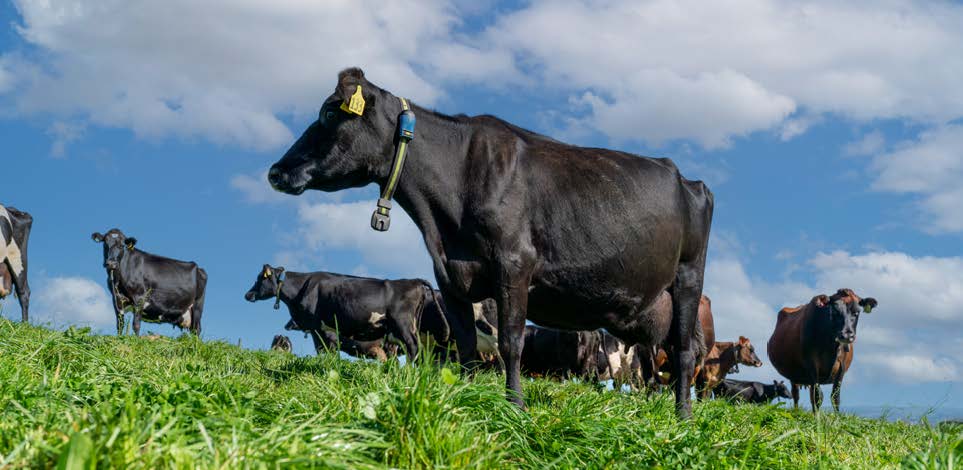SenseHub® Dairy collars deliver deeper herd insights, less manager stress
August 17, 2025

Farmer
Peter Thompson
Location
Te Awamutu, Waikato
Farm Size
100ha (effective)
Herd Size
280 KiwiCross® cows at peak on system 4, autumn calving
Contract Milker
Campbell Jamieson-Young
Fitting SenseHub® Dairy collars to the herds on both his Waikato farms is providing farm owner Peter Thompson with valuable oversight on the health and performance of every cow.
Peter wanted to improve all the key performance indicators in both herds and says the SenseHub Dairy collars provide a much deeper level of herd information than he could get from regular communication with his two contract milkers managing separate herds on neighbouring farms near Te Awamutu.
Campbell Jamieson-Young is in his fifth season (2025-26) and milking 280 mostly KiwiCross® cows on 100ha effective. Kane Wilson is in his second season as contract milker for the other crossbred herd of 250 spring-calving cows, directly over the road.
Peter says his first priority was to see if the SenseHub Dairy collar data would help improve mating performance after several years of mediocre in-calf rates.
The turn-around in mating results was slow in the first couple of years after the collars were fitted in 2020, but they have improved significantly since Campbell took over the following season.
Campbell and Peter admit they are not natural adopters of any new technology, but they stayed positive and the results are just reward for their persistence.
The herd milked by Campbell was originally on a split- calving regime, with about 200 cows calving in spring and 100 in the autumn. It was reduced to 280 in total, and the entire herd is now mated to calve in the autumn.
Campbell says the transition to autumn calving for the whole herd was much simpler and more successful with the data history available on every cow. Last spring, he noticed a good percentage of the remaining spring- calving herd was on heat just over three weeks after they had calved, so he immediately introduced a team of bulls to get them back in calf again so they calved the following autumn.
Those heats would have been missed without the SenseHub Dairy collars capturing the data. It’s that simple,” he says.
Campbell has also been working closely with their veterinarian, Krispin Kannan, to interpret the SenseHub Dairy cow collar data and proactively manage the herd to help achieve their higher performance goals.
Rumination minutes for each cow was one of the early breakthroughs they discovered as a key indicator of individual cow health, particularly in that challenging first few weeks after calving.
“Krispin helped us develop a plan built on selecting cows not doing 400 minutes of rumination each day. These are drafted off at their next milking and checked,” Campbell says.
“We’re checking if she has a high temperature, does she have mastitis, or is she lame? What’s happened 24 hours after calving?”
Every cow in the herd over five years of age receives a mineral bolus to help them through the transition between calving and entering the milking herd. But any cow with a rumination count of less than 400 also receives a Calpro bolus.
“We are finding all the transition boluses work really, really well. It’s reduced milk fever here, but we’re also finding that after receiving a bolus, cows come straight off being under stress and they are back ruminating to a good level within 24 hours.”
Campbell says when he took over as contract milker, it took him three months to gain sufficient confidence in what the data collected on each cow was telling him. He appreciated the early training provided by his SenseHub Dairy trainer and says the support from his veterinarian was a big help too.
“Once Krispin jumped on board, it was being able to turn the information we were getting into everyday language for me that I could understand, and start to focus on that we started moving forward and change where things were going wrong.”
The insights provided by the collar data began to give Campbell the ability to forecast where the herd would likely be a week or more in the future. For example, he was able to pinpoint improving pasture quality based on reduced rumination time.
“You can see if the cows are going to fire quickly and if the pasture’s starting to turn, if you’re starting to head into a flush or not. You can actually see it on your collar data because your cows are starting to not eat as much.”
“It shows they’re not eating as much because they’re getting full and that’s what a lot of people misinterpret. They seem to think the more they eat, the fuller they are. But if they’re eating a heap, they’re actually hungry and they’re having to search for food.”
At critical times of the season, Campbell communicates with Krispin regularly to discuss the data and to consider any changes to trigger alert levels or possible interventions that might be needed.
Keeping the herd history data up to date is vital to build a total picture on each cow. He still favours checking cows regularly in the paddock, especially leading up to calving, because that allows him to enter extra data on individual cows which adds to their overall profile.
“The biggest thing I can say to people is you only get out of it what you put in. You must enter data daily, including morning and evening calving information, sickness, lameness or mastitis infections, because it all creates a picture of each cow. That’s what I’ve learned about the power of the collars.”
Campbell says the SenseHub Dairy collars are saving him the cost of having a full-time employee, equivalent to about $70,000 per year. He does employ a calf rearer, but he says the 30-aside herringbone shed has cup removers and a Protrack® drafting gate which is integrated with each cow’s ear tag for automatic drafting after each milking.
Having the collars in place also reduced the pressure for Campbell’s family who had to take over managing last calving while he recuperated from a hip replacement operation. He was able to maintain contact with them on the status of every cow in the herd using the computer or phone application, so he could advise and help trouble- shoot any issues they faced.
Campbell does all his own artificial inseminations, twice daily for most of the season, and says the collars make heat detection much more accurate.
“Once I’ve set the mating start date in the system, I don’t have to think twice – the collars take care of it. As I’m milking, any bulling cows are automatically drafted. It’s that simple.”
SenseHub Dairy users can pre-set drafts up to 30 days in advance, making planning and timing effortless.
“Once I’ve finished milking and got the wash going through, I check each cow on the computer. The late ones I put up, but if they’re too early, they go to the next milking.”

“Once I’ve finished milking and got the wash going through, I check each cow on the computer. The late ones I put up, but if they’re too early, they go to the next milking.”
He’s using sexed semen and has fine-tuned the timing for insemination to between 16 and 20 hours after heat is detected.
“If she’s on too early, it’s a waste of time. We’ve worked out that the 16-to-20-hour window works best for our
situation. When we AI the cow with sexed semen and we’ll get 95% in-calf.”
To get a fuller picture on each cow in a herd, Campbell advises other farmers to install SenseHub Dairy collars as they are dried off from the milking herd.
Campbell says any cow showing a health alert has its temperature taken followed by a check for mastitis, then lameness. If nothing shows up, she is drafted off again next day for a recheck.
Peter is confident the return on dollars invested to subscribe or buy SenseHub Dairy collars is worth it. For him, the ability to review the same data both his contract milkers are seeing on each cow is helpful. He communicates regularly with both contract milkers but says he can also choose to let them get on with the day-to-day management of the herds.
Since adding the SenseHub Dairy collars, animal health costs have reduced and the in-calf rate has improved. A good cost saving comes from only pregnancy testing cows showing as suspected empty on SenseHub Dairy’s Pregnancy Probability Report.
By flagging cows that show a significant change in behaviour compared to their normal patterns, SenseHub Dairy collars help farmers spot animals that may need attention – often before visual signs appear.
“Instead of waiting to notice a cow looking off, the data gives us an early heads-up that something might be going on,” says Peter. “It means we can check her straight away, talk to the vet if needed, and get her back on track faster. That early intervention can help reduce treatment costs and downtime.”
Campbell is more forthright in his view of the return from fitting SenseHub Dairy collars: “If I was going sharemilking, I’d be buying SenseHub Dairy collars. I wouldn’t farm without that technology now.
“Our key driver is production. Production’s what we’re paid on. If your cow’s not healthy, 100% firing, you’re not making money.”
“The collars are also helping to minimise your animal health costs because you’re being more proactive than reactive,” Campbell says
sign up or have a chat – leave your details below
Our local Sales Specialist will get in touch soon.
NZ-SHB-250600009


 Argentina
Argentina Belgium (Dutch)
Belgium (Dutch) Brazil
Brazil Chile
Chile Colombia
Colombia Finland
Finland France
France Germany
Germany Ireland
Ireland Italy
Italy Mexico
Mexico New Zealand
New Zealand Norway
Norway Panama
Panama Portugal
Portugal Spain
Spain Sweden
Sweden United Kingdom
United Kingdom Global
Global